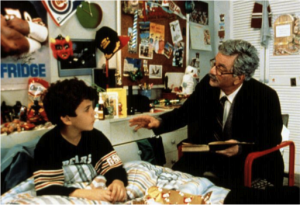How to kickstart your PR

John Van Den Nieuwenhuizen is a co-founder of Hidden Radio Design which makes Hidden Radio, the stylish Bluetooth speaker that you twist to turn on.
John Van Den Nieuwenhuizen was getting some real traction.
“$125,000 was our [fundraising] goal, [and] we’d already raised like $200,000,” says John, cofounder of Hidden, which makes HiddenRadio.
But a popular tech site wouldn’t cover Hidden, even though the editors loved the product.
So what was the problem?
They pitched too late. “They emailed back and…said, “For crowd-funded projects, we only publish them if they haven’t reached their goal yet,’” says John.
So John got media savvy, and Hidden started getting covered by top media outlets. “We got mentioned in like Core77, Cult of Mac, all of the Apple sites, Wired magazine, VentureBeat…all of these really incredible sites,” he says.
Thanks to that PR, they raised $940,000 in 60 days.
In his Mixergy course, John shows you how kickstart your own PR. Here are three highlights from the course:
1. Step Out of Your Comfort Zone
 Networking is scary, especially if you’re a “behind-the-scenes” kind of person.
Networking is scary, especially if you’re a “behind-the-scenes” kind of person.
“[My cofounder] Vitor and I aren’t traditional PR people,” says John. “It’s not
our forte. We never trained in that field. We’re designers. We like being
behind the computer, working away.”
But John knew he was missing out on chances to promote HiddenRadio.
So how do you seize those opportunities?
Introduce yourself at events
Go to industry events and introduce yourself to people.
“I tried to get myself out there and network better at these events,” says John.
And it paid off. At one industry event, one woman asked about what he did. “I showed her my…product, and she thought it was really cool,” he says. It turned out that “she was the head of PR for Flipboard,” he says. “I had no idea.”
Three months later, traffic on his site spiked. “She put [us] on the front page of Flipboard for the weekend, which just got us incredible coverage,” he says. “The fact that I went out of my comfort zone, went up and introduced myself at these events and got out there, it was very beneficial.”
2. You Have to Do Your Homework
 Some founders email blast tons of publications, hoping one will bite.
Some founders email blast tons of publications, hoping one will bite.
Unfortunately, their emails are destined for the trash. Or worse, they’re flagged as spam.
Either way, you don’t get media coverage, and you’ll probably annoy a few reporters.
So what’s a more effective method?
Look for similar products
You need to pitch the right people.
To find them, look for successful products that are similar to yours. For instance, if you created a smart watch, you could look for articles about the popular Pebble watch.
“I would look up Pebble watch reviews, and see who’s written articles on that watch,” says John. “Then, you can very quickly see which are the ones that might potentially publish an article on your smart watch.”
The bonus is that sometimes the reporters you target write for more than one site. “So you might even be lucky and get more than just Forbes or whoever,” he says.
3. Tell a Compelling Story
 Giving reporters a list of features is like serving saltine crackers for dinner.
Giving reporters a list of features is like serving saltine crackers for dinner.
They want something they can sink their teeth into. Something juicy to tell their readers.
“Just putting a product out there and saying its tech specs, it’s not enough,” says John. “You know, why do people care? That’s very important.”
So how do you get people to care?
Create an emotional connection
Tell a great story.
“What’s the narrative you’re going to tell?” says John. “You really need to make an emotional connection with the consumer. You need to think about…the story behind the company.”
This is beneficial for two reasons. First, it makes the reporter’s job easier. “If you can give them nice ammunition, they’re not going to have to go ask you questions about it,” says John.
And second, it makes people root for you. “Our company…is a-couple-of-guys-working-out-of-a-garage mentality,” says John. “It doesn’t take a big corporation to pull off a cool design and a cool product. Anyone can do it. I think a lot of people relate to us. We’re not super geniuses, we’re just like everyone else.”
Written by April Dykman. Production notes by Jeremy Weisz.
